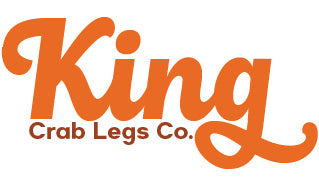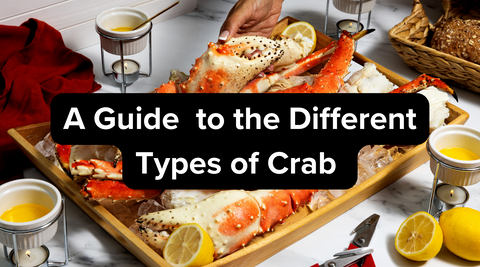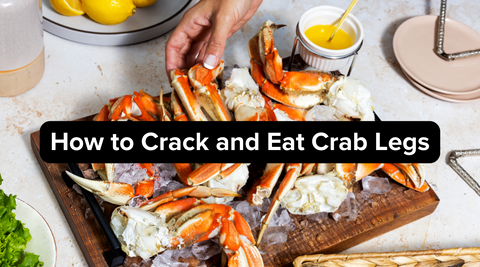The Anatomy of a Crab
Crabs have many different parts, but only some are edible. It's important to learn their anatomy so that you know which parts are worth cracking into and what may better serve as a base for a stock.
Crab Anatomy Basics: Parts of the Crab
There are several thousand species of crab in the oceans. While each is different, they share anatomical similarities. Crabs are crustaceans, so they have a hard outer shell known as an exoskeleton. This exoskeleton protects them from predators and other environmental factors. The following parts make up the anatomy of a crab:
- Claw or chela: The first pair of legs on a crab end with claws. Crabs use their claws to catch food, defend against predators and fight between themselves.
- Antenna: Crabs generally have two pairs of antennae, also known as feelers. The first set of antennae is short and helps crabs process information about whether what they are touching is suitable food. The long antennae help them navigate their way through murky water. These antennae easily pickup vibrations from the surrounding environment and give crabs other tactile information.
- Eyes: Located on short moveable stalks, crabs can adjust their eyes and tuck them into their eye sockets for protection. They have compound eyes with panoramic visions. Even though they can't focus well, their eyes are very sensitive and can easily detect UV light in low light conditions and pick up on the slightest movements around them. The eyestalks also produce a hormone that helps regulate crabs' metabolism and their molting process in the body.
- Walking legs: Crabs generally have three pairs of legs for walking on surfaces. While crabs are capable of walking forward, they generally walk sideways.
- Swimming legs: A crab's last pair of legs are flat and help with swimming.
- Dactyl: On a crab's walking legs, the dactyl is the last segment that touches the ocean floor as the crab walks. The dactyl is also the moveable part of a crab's claw.
- Carpus: The carpus forms part of a crab's legs. It is the fifth segment on the leg and connects the merus to the propodus.
- Merus: The merus is a sweet tenderloin of a king crab located in the crab's leg between the knuckle and first joint. This delectable cut is one of the most prized parts of a king crab.
- Propodus: This portion comprises most of a crab's claw, including the unmoveable finger and palm-like area.
- Cephalothorax: This part contains the head and chest regions of a crab. It helps to protect vital organs such as the brain, heart, stomach, bladder, and testicular or ovarian regions.
- Abdomen: A crab's abdomen is below the cephalothorax. It is a delicate part of a crab that is unprotected.
How Many Legs Do Crabs Have?
Crabs commonly have 10 legs — one pair of pincers and four pairs of walking legs, but the number varies by species. Some crabs, such as the porcelain crab, have eight legs.
The Anatomy of a King Crab
The king crab is one of the largest edible crabs. Their anatomy is similar to other crabs, except that they have six walking legs instead of eight. Their claws are also two different shapes. The larger claw does the heavy lifting, like crushing prey. The smaller claw is for more delicate handling of food. You can also easily tell the difference between their genders. A male king crab has a narrow abdomen flap, while a female has a wide flap.
Three main types of king crab are available on the market— each is distinct in its outward appearance:
- Red king crab: This popular crab has a reddish-brown shell and is the most sought-after crab worldwide. Red king crabs occur in British Columbia, Japan and Alaska. In Alaska, they're found in abundance in Bristol Bay and the Kodiak Archipelago. They live from the intertidal zone to 100 fathoms or more. They can grow up to 24 pounds and have a leg span of up to 5 feet.
- Blue king crab: As its name suggests, this crab's shell has a blue hue. Its legs are more slender and oval-shaped than the red king crab.
- Golden king crab: This crab is the smallest of the three varieties and has less meat. It weighs 5 to 8 pounds and has a golden-orange shell.
- Jonah crab: This is an oval-shaped crab with a red top and a yellowish underside. Jonah crabs also sometimes have a mottling of yellow and red on their legs. They are usually found off of the Atlantic Coast from Newfoundland to Florida.
The Size of Crabs
There are over 4,500 varieties of crab, each with features that make them stand out. These are some of the most well-known edible crabs on the market:
- Blue crab: This beautiful blue-green crab is the most prolific on the East Coast of the U.S. Blue crabs can grow up to 9 inches, but they are usually harvested before reaching this size, so the ones on the market range in size from 3 ½ inches up to 5 ½ inches. The blue crab weighs about ⅓ pound, but the edible portion is less than this.
- Dungeness crab: This crab is brownish purple and usually 6-7 inches across. However, they can reach sizes of over 10 inches.
- King crab: This large species can weigh up to 25 pounds and measure a length of up to 10 feet. While it is one of the largest crabs, only around 25% of its body offers edible meat — namely, the legs and the claws.
- Peekytoe crab: Peekytoe crabs have a red or orange shell and a white belly. They usually don't exceed 5 inches wide.
- Jonah crab: Male Jonah crabs can have a carapace width of about 7 inches, while females are usually smaller. The Interstate Fishery Management Plan for Jonah Crab prohibits fishermen from fishing for Jonah crabs that are less than 4 ¾ inches.
What Parts of the Crab Are Edible?
Take a look at some of the most delicious parts of a crab and how to eat them:
- Claws: A crab's claws hold the largest amount of muscle and, therefore, the most juicy meat. They are tastier and easier to eat than many other crab parts. You can use a cracking tool or a hard utensil to crack the claw and peel off the shell.
- Legs: The leg meat tends to separate easily from the shell. You can extract it by breaking the joints of the legs backward and slipping the meat out from the cartilage.
- Body: Crabs with wider bodies, such as the Dungeness crab and blue crab, have more meat to offer in their bodies than crabs with smaller bodies. Once you've removed the legs and opened the top shell, you can use a hammer to break the body and extract the meat in the various cartilaginous channels. For crabs with small bodies, picking out the meat may be more work than worth it. Instead, add the bodies into stocks and sauces for a sweet crab flavor.
- Shells: You can use the shells to create a tasty fish stock. Toss them in a pot with cool water, boil them for 10 minutes and then strain out the shells when done.
- Back fins: This part of the crab is delicious. All you have to do is cut the crab in half to reveal the back fin and reach inside to remove the flesh.
- Mustard: Also known as the green gland or tomalley, the mustard filters blood impurities in crabs. While edible, it has a pungent taste that only some people enjoy.
Order King Crab Today
There are so many delicious parts to a crab, and you can use some of the other parts to flavor homemade fish stock for other dishes. When it comes to king crabs, the most prized part is their legs. Their succulent meat has a sweet flavor that people around the world love!
Our overnight shipping lets you enjoy delectable king crab delivered straight to your door. Our sustainably sourced crab arrives fresh and includes step-by-step instructions on how to cook it so you can savor the sweet flavor at its best. Shop our online store and order your king crab today!



